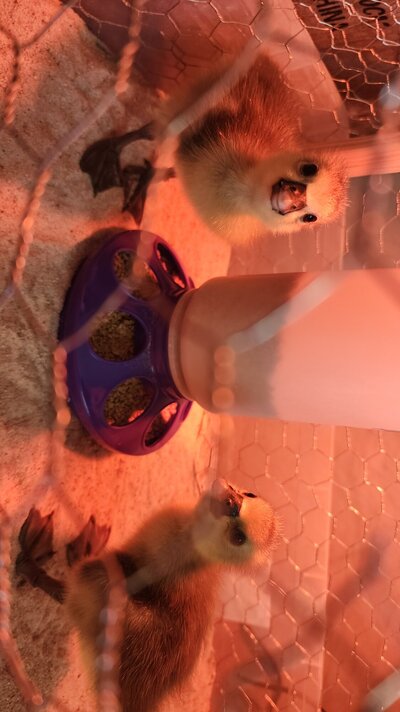Hey all! I'm about a week in to raising two adorable little goslings, and I just wanted to be prepared for the coming weeks regarding their feed. Right now, they're being fed Purina flock raiser crumbles (they're being brooded with a group of chicks). It contains 20% protein and 55mg/kg niacin. I've read that too high of a protein percentage as they get older can cause joint problems. At what age do I need to look at giving them a feed with less protein?
Also, if anyone has any advice on how I can get them to stop chewing my chicks' tail feathers, that would be lovely I try to provide them with clovers and greens to keep them occupied, but they seem intent on trying to eat anything and everything in their path. Fortunately, the chicks don't seem bothered at all, so I know it's not hurting them, I just don't want this to become a habit if I can avoid it.
I try to provide them with clovers and greens to keep them occupied, but they seem intent on trying to eat anything and everything in their path. Fortunately, the chicks don't seem bothered at all, so I know it's not hurting them, I just don't want this to become a habit if I can avoid it.
Also, if anyone has any advice on how I can get them to stop chewing my chicks' tail feathers, that would be lovely




 Really interesting and helpful info - thanks for posting!
Really interesting and helpful info - thanks for posting! You'll know when their blood feathers are coming in because they are very heavy and the gosling repeatedly keeps picking thier wings back up so help them to strengthen thier muscles and tendons by running away from them with your arms stretched out and doo zoomies with them
You'll know when their blood feathers are coming in because they are very heavy and the gosling repeatedly keeps picking thier wings back up so help them to strengthen thier muscles and tendons by running away from them with your arms stretched out and doo zoomies with them